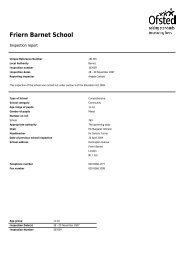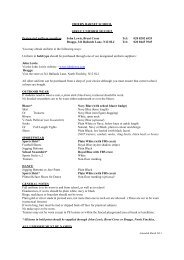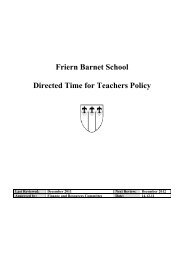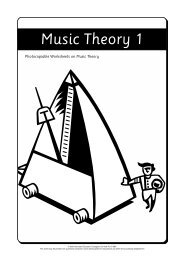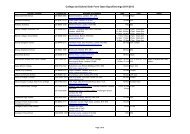VOL 166 Music Theory 2 - Friern Barnet School
VOL 166 Music Theory 2 - Friern Barnet School
VOL 166 Music Theory 2 - Friern Barnet School
Create successful ePaper yourself
Turn your PDF publications into a flip-book with our unique Google optimized e-Paper software.
Name: ____________________ <strong>Music</strong> <strong>Theory</strong> 2 Worksheet<br />
TRANSPOSITION<br />
Transposition in music simply means changing the pitch of a piece of music without altering the<br />
relation of one note to another. If you look at the extracts below you will see that although the<br />
first one is in C major the intervals have stayed the same when it has been transposed up a<br />
tone into D major. The major thirds in the accompaniment are still major thirds in the transposed<br />
extract. The minor third in the melody line is still a minor third in the transposed extract.<br />
major 3rd<br />
minor 3rd<br />
minor 3rd<br />
If you need to transpose a piece of music the most important thing to remember is that you<br />
must keep all the intervals the same as the original. It is particularly easy to forget to add a<br />
necessary accidental. If the key signature hadn’t been transposed in the extract above it might<br />
have been easy to forget the F and C sharps.<br />
On the empty stave below transpose the melody line of the C major extract down a tone.<br />
Try this with the key signature written in and then without using accidentals.<br />
On a separate piece of manuscript paper try writing out both parts a tone lower.<br />
The new key is:<br />
444444444444444444<br />
444444444444444444<br />
www.keynoteseducation.com © 2004 Keynotes Education Crossgate Cornwall PL15 9SX<br />
This sheet may be printed from a personal computer and/or photocopied for educational use within the purchasing establishment<br />
3







